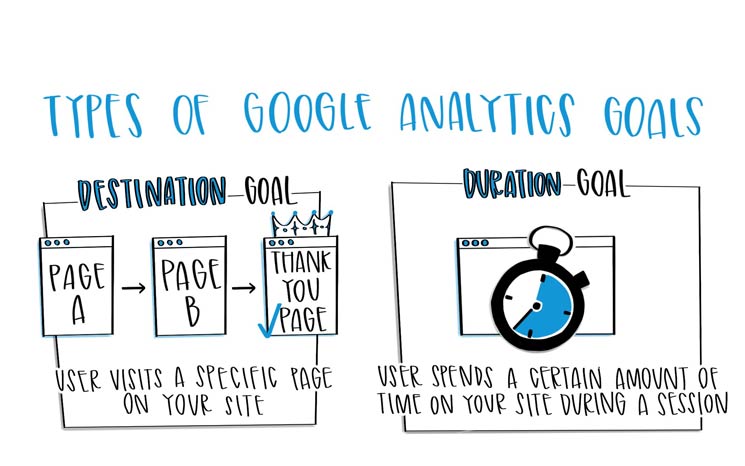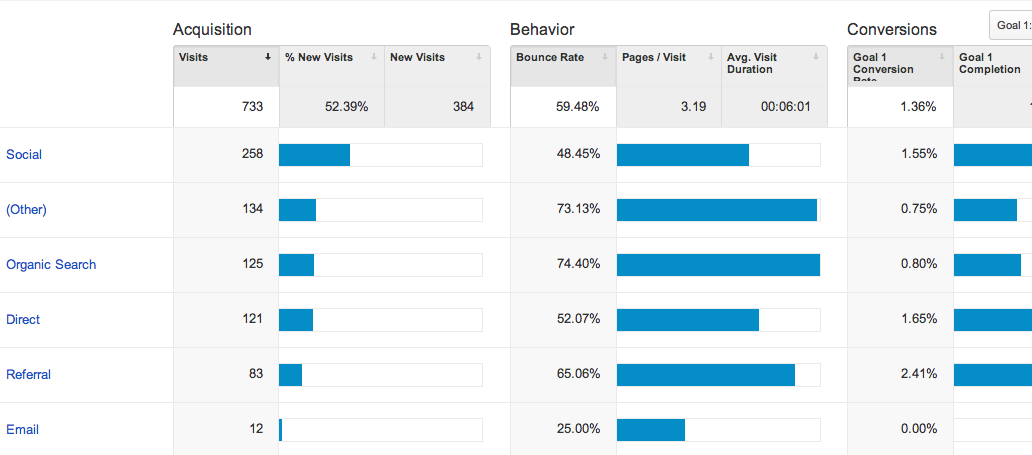Understanding What Data Is Google Analytics Goals Unable to Track
Understanding What Data Is Google Analytics Goals Unable to Track
Blog Article
Demystifying Google Analytics Limitations: Reveal What Information Goals Can not Track
In the world of digital analytics, Google Analytics stands as an effective tool that offers valuable insights into web site efficiency and individual habits. Nevertheless, among its capacities, there exist constraints that typically go undetected. Comprehending what Google Analytics can not track is critical for an extensive grasp of information interpretation and decision-making procedures. From the ins and outs of customer interaction with dynamic content to the complexities of cross-device individual trips, these limitations clarified areas that might stay covered from conventional analytics perspectives. By unwinding these constraints, a more clear photo emerges, permitting even more enlightened techniques and refined understandings into user interaction and conversions.

Individual Communication With Dynamic Web Content
User communication with dynamic material plays a crucial duty in understanding customer behavior on sites and maximizing the total user experience. Dynamic material describes aspects on a website that can change without the requirement for a full page reload. This consists of interactive components such as pop-ups, sliders, forms, and videos that reply to individual actions in real-time. By tracking customer interactions with dynamic content, site owners can obtain useful insights into user interaction, choices, and habits.
Google Analytics uses different devices to track individual communications with vibrant material, such as event tracking and digital pageviews. Occasion tracking permits you to keep track of specific individual activities, like clicking a switch or enjoying a video, offering data on how users communicate with vibrant aspects.
Cross-Device Individual Journeys
How can modern analytics devices track the facility courses customers take across several tools in their online trips? Cross-device individual trips present a considerable challenge for tracking and evaluating customer behavior precisely. As customers connect with applications or websites making use of various gadgets such as desktops, smartphones, and tablet computers, it comes to be crucial to comprehend exactly how they relocate in between these platforms to optimize user experience properly.
Google Analytics faces limitations in tracking cross-device user trips due to privacy worries and technical restrictions - what data is google analytics goals unable to track. While it can supply insights right into specific tools' interactions, tracking a smooth individual trip throughout numerous gadgets remains a difficulty. This limitation can lead to incomplete information and fragmented user insights, making it hard for services to produce a unified sight of the customer trip
To address this concern, companies can use sophisticated analytics devices that offer cross-device monitoring capabilities, permitting them to obtain a much more holistic understanding of user habits. By leveraging these tools, companies can link the gap in tracking cross-device user trips and optimize their electronic strategies for a smooth individual experience.
Offline Conversions and Attribution
As services browse the challenges of tracking cross-device user trips, an additional pivotal element to think about is the world of offline conversions and acknowledgment in the world of information analytics. While Google Analytics gives beneficial insights into online individual habits, it fails when it pertains to tracking conversions that take place offline. This restriction postures a substantial obstacle for businesses that have both online and offline sales channels.
Offline conversions, such as purchases made in physical stores or through phone call centers, are important to comprehending the complete consumer journey. Without the capacity to attribute these offline conversions to specific online interactions, services may struggle to accurately measure the impact of their digital advertising and marketing initiatives.
To address this gap, services can check out different remedies such as integrating CRM systems with online analytics devices or making use of unique discount codes that can be traced back to on the internet campaigns. By bridging the gap between online and offline data, organizations can gain an extra detailed understanding of their customers' habits and boost their total advertising methods.
Person Customer Recognition
In the world of information analytics, the ability to properly determine specific customers across numerous on-line touchpoints is an important challenge for companies looking for to customize and maximize their advertising approaches. While Google look at this web-site Analytics supplies beneficial insights into user habits and interactions, it drops short in allowing the identification of certain people due to personal privacy issues and technical limitations. Google Analytics makes use of special identifiers such as cookies to track individual sessions and habits, yet these do not correspond to identifying specific customers in an individual sense.

Information From Secure Pages
In spite of the increasing prevalence of secure pages on websites, obtaining data from these encrypted resources presents a special difficulty for electronic analytics systems like Google Analytics. Safeguard pages, indicated by HTTPS in the URL, encrypt data traded between the user's internet browser and the internet site's web server to ensure personal privacy and safety. While this file encryption is essential for securing sensitive info, it additionally poses restrictions for tracking individual habits and event analytics information.
Google Analytics encounters barriers in accumulating comprehensive info from secure web pages as a result of the encryption protocols in location. Because of this, certain information points such as referral sources, keyword searches, and also some user interactions might not be totally captured when customers access a site through a protected link. This restriction can influence the accuracy and efficiency of the information analysis, bring about spaces in recognizing user habits and choices on safe and secure pages.
To browse this challenge, electronic analysts might need to explore alternative tracking approaches or utilize various other tools particularly designed to collect insights from safe and secure web pages. By adjusting approaches to accommodate these constraints, services can still derive useful analytics regardless of the restraints provided by encrypted links.
Final Thought
In final thought, Google Analytics has limitations in tracking user interaction Continued with vibrant material, cross-device customer trips, offline conversions, private user recognition, and data from safe and secure pages. Despite its useful understandings, Google Analytics might not give a full picture of customer interaction throughout different touchpoints.
User communication with vibrant material plays a critical role in comprehending user actions on sites and maximizing the total user experience. By tracking customer interactions with dynamic content, website proprietors can acquire valuable understandings into individual interaction, preferences, and actions.
Google Analytics uses special identifiers such as cookies to track individual sessions and habits, but these do not relate to identifying specific users in a personal feeling.
As a result, specific information factors such as referral resources, keyword searches, and even some individual interactions may not be fully recorded when users access a site via a secure link.In conclusion, Google Analytics has limitations in tracking individual interaction with dynamic material, cross-device user trips, offline conversions, specific user recognition, and data from protected web pages.
Report this page